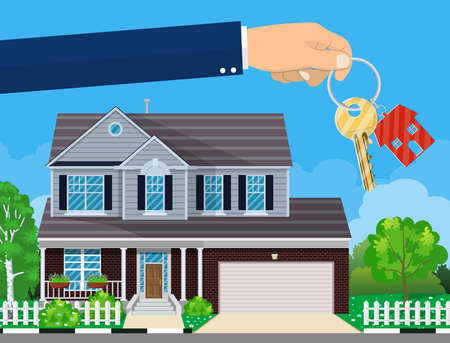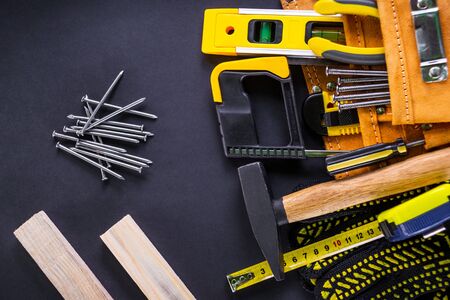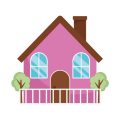Understanding Your Needs and Local Regulations
Before you start shopping for fence materials or calling contractors, its important to understand why you want a fence in the first place. In the U.S., homeowners typically install fences for a few key reasons: privacy, security, and curb appeal. Knowing your main goal will help guide the type of fence you choose.
Common Reasons for Installing a Fence
| Reason | Description | Recommended Fence Types |
|---|---|---|
| Privacy | Block views from neighbors or passersby | Wood panel, vinyl, composite |
| Security | Keep intruders out and children or pets in | Wrought iron, chain link with slats, tall wood fences |
| Aesthetics | Add style and value to your property | Picket fences, decorative aluminum, custom wood designs |
Know Your Local Rules Before You Build
Once you’ve identified your main purpose for the fence, it’s time to check local regulations. In many parts of the U.S., zoning laws and neighborhood rules can affect what kind of fence you can build—and where.
Zoning Laws
Zoning laws are set by your city or county government. These laws often dictate:
- Maximum height of the fence (often different for front vs. backyard)
- How far back from the property line the fence must be placed (setbacks)
- Restrictions on materials or styles in certain zones
Homeowners Association (HOA) Rules
If you live in an HOA community, you’ll likely need to follow additional guidelines. These may include:
- Approved colors and materials
- Specific fence heights and styles that match the neighborhood aesthetic
- Getting written approval before installation begins
Permits and Inspections
In most cases, especially if youre building a tall or permanent structure, youll need a permit from your local building department. The permit process ensures your fence meets safety codes and local ordinances. Some areas may also require a final inspection after installation.
Quick Tip:
Contact your local planning or building office early in the process to avoid costly mistakes or legal issues later.
A well-planned fence starts with understanding your goals and following local rules. This foundation sets you up for a successful project that meets both your needs and community standards.
2. Popular Fence Types and Their Pros & Cons
Choosing the right fence for your yard depends on several factors, including your budget, style preference, maintenance level, and how much privacy or security you need. Here’s a look at some of the most popular fencing materials used across the U.S., along with their pros, cons, and general cost considerations.
Wood Fences
Wood fences are a classic choice and remain one of the most popular fencing options in America. They offer a warm, natural look and come in various styles like picket, privacy, and split rail.
Pros:
- Customizable in height, color, and design
- Provides excellent privacy
- Can be painted or stained to match your home
Cons:
- Requires regular maintenance (painting/staining)
- Susceptible to rot, termites, and warping over time
Average Cost:
$15–$30 per linear foot (materials + installation)
Vinyl Fences
Vinyl fencing is a low-maintenance alternative to wood that offers a similar appearance but lasts longer without needing paint or stain.
Pros:
- No painting or staining required
- Resistant to rot, insects, and fading
- Cleans easily with soap and water
Cons:
- Higher upfront cost than wood
- Lacks the natural feel of real wood
Average Cost:
$20–$40 per linear foot (materials + installation)
Aluminum Fences
If youre looking for something stylish yet durable with minimal upkeep, aluminum fencing might be a good option. Its commonly used for decorative purposes or around pools.
Pros:
- Sleek and modern appearance
- No rusting and very low maintenance
- Ideal for sloped landscapes due to rackable panels
Cons:
- Lacks privacy unless combined with landscaping or inserts
- Softer metal can bend under pressure or impact
Average Cost:
$25–$50 per linear foot (materials + installation)
Chain Link Fences
This is one of the most affordable options for enclosing a yard. While not known for aesthetics, it’s practical and durable.
Pros:
- A budget-friendly fencing solution
- Easily installed on uneven ground
- Difficult to damage or break through
Cons:
- Lacks visual appeal and privacy without add-ons like slats or plants
- Zinc coating may wear off over time if not galvanized properly
Average Cost:
$10–$20 per linear foot (materials + installation)
Composite Fences
A newer option gaining popularity, composite fencing combines recycled wood fibers and plastic to create a strong, eco-friendly alternative to traditional wood.
Pros:
- Mimics the look of wood without the high maintenance
- Pest- and rot-resistant
- Sustainable material choice for environmentally conscious homeowners
Cons:
- Tends to be one of the more expensive options upfront
- Might fade slightly over time depending on sun exposure
Average Cost:
$25–$45 per linear foot (materials + installation)
Fence Type Comparison Table
| Fence Type | Pros | Cons | Avg. Cost (per linear ft) |
|---|---|---|---|
| Wood | Natural look, customizable, great privacy | High maintenance, prone to rot/termites | $15–$30 |
| Vinyl | Low maintenance, long-lasting, clean look | Higher initial cost, less natural feel | $20–$40 |
| Aluminum | Durable, sleek design, low maintenance | Not private, may bend under pressure | $25–$50 |
| Chain Link | Affordable, strong, easy install | Minimal privacy/aesthetics | $10–$20 |
| Composite | Eco-friendly, looks like wood without upkeep | Expensive upfront | $25–$45 |
This overview should help you start thinking about which type of fence fits your homes needs. Whether youre aiming for curb appeal, privacy, security—or all three—understanding these material options is an important first step.

3. Choosing the Right Fence for Your Climate
When it comes to selecting the perfect fence for your yard, climate plays a big role in how well your fence will hold up over time. The United States has a wide range of weather conditions—from hot and dry deserts to cold and snowy regions—so choosing materials that can stand up to your local environment is key to making a smart investment.
Why Climate Matters
Different materials react differently to moisture, sunlight, temperature changes, and wind. For example, wood may warp in humid areas, while metal fences can rust in coastal regions. By understanding your regions weather patterns, you can choose a fence that looks great and lasts longer with less maintenance.
Fence Material Performance by Region
| U.S. Region | Common Climate Conditions | Recommended Fence Materials | Avoid These Materials |
|---|---|---|---|
| Northeast (e.g., New York, Massachusetts) | Cold winters, snow, and humidity | Vinyl, aluminum, pressure-treated wood | Untreated wood (can rot), low-grade metal (may rust) |
| Southeast (e.g., Florida, Georgia) | High humidity, heavy rain, hurricanes | PVC/vinyl, aluminum (rust-resistant) | Chain-link without coating (can corrode), wood without sealant |
| Midwest (e.g., Illinois, Ohio) | Snowy winters, hot summers, storms | Cedar wood (naturally resistant), composite fencing | Poor-quality vinyl (may crack), untreated lumber |
| Southwest (e.g., Arizona, New Mexico) | Drought, intense sun, dry heat | Masonry walls, vinyl with UV protection, metal fences with powder coating | Naked wood (dries and cracks), plastic without UV resistance |
| West Coast (e.g., California, Oregon) | Mild climate overall; coastal areas have salty air and fog | Treated wood, stainless steel or coated aluminum, composite materials | Ironic or bare steel (prone to rust near the ocean) |
Selecting Materials That Last Longer
If youre not sure what works best in your area, talk to local contractors or neighbors who have installed fences recently. Theyll know what materials perform well locally. Also consider factors like drainage around your property and whether youll need extra support against strong winds or heavy snowfall.
A Few Quick Tips:
- If you live near the coast: Choose rust-proof metals or vinyl.
- If you get lots of rain: Avoid untreated wood; go for pressure-treated or composite options.
- If you face high winds or storms: Install reinforced posts and panels designed for wind resistance.
- If youre in a sunny area: Pick UV-resistant materials to prevent fading and cracking.
No matter where you live in the U.S., picking a fence that matches your climate will save you time and money on repairs—and keep your yard looking great year-round.
4. Design & Aesthetic Considerations
Choosing a fence isnt just about security or privacy — its also about style. The right fence can enhance your homes curb appeal, highlight your landscaping, and reflect your personal taste. Heres how to make design choices that will complement your yard and home.
Match the Fence Style to Your Homes Architecture
One of the most important factors in choosing a fence is making sure it aligns with the architectural style of your home. A well-matched fence creates a cohesive look and boosts overall aesthetics.
| Home Style | Recommended Fence Type |
|---|---|
| Colonial | White picket fence or traditional wood fence |
| Modern/Contemporary | Sleek horizontal slat fence or metal panels |
| Ranch or Farmhouse | Split rail or post-and-rail wooden fence |
| Cottage or Craftsman | Decorative wood or lattice-top fences |
| Victorian | Wrought iron or ornate metal fencing |
Consider Your Landscape and Yard Layout
Your yard’s features should influence your fence design. For example, a short decorative fence might work well for front yards with flower beds, while taller privacy fences are better for backyards with patios or pools.
- If you have a sloped yard, consider stepped or racked fencing for an even appearance.
- For small yards, lighter-colored or open-style fences can make the space feel bigger.
- If you have lots of greenery, a natural wood tone might blend in better than painted options.
Select Materials That Match Your Style and Maintenance Preferences
The material you choose affects not only how your fence looks but also how much effort it will take to maintain over time. Here’s a quick comparison:
| Material | Aesthetic Appeal | Maintenance Level |
|---|---|---|
| Wood | Warm, classic look; customizable with paint/stain | High – needs sealing, staining, or painting regularly |
| Vinyl | Crisp and clean; modern styles available | Low – easy to clean with soap and water |
| Metal (Aluminum/Wrought Iron) | Sleek or ornate depending on design; great for visibility | Medium – may need rust protection or repainting over time |
| Composite | Mimics wood with less upkeep; contemporary styles available | Low to Medium – occasional cleaning required |
| Bamboo/Reed Panels | Tropical or eco-friendly vibe; unique texture | Medium – may weather over time without treatment |
Add Decorative Elements for Personality and Flair
You can personalize your fence with design touches that show off your style. Consider:
- Lattice tops for added charm and partial visibility.
- Post caps in decorative shapes like pyramids, balls, or solar lights.
- Custom paint colors that match your home’s trim.
- Trellis sections for climbing plants like roses or ivy.
- Integrated planters or hanging hooks for garden décor.
Your Personal Taste Matters Most!
No matter the trends, your fence should reflect what you love. Whether you prefer sleek lines, rustic charm, or classic white pickets, choose a style that makes you feel at home every time you pull into the driveway.
5. Installation Options and Budget Planning
Once you’ve chosen the type of fence that suits your yard, it’s time to think about how you’ll get it installed and how much it will cost. There are two main paths: doing it yourself (DIY) or hiring a professional. Each has its pros and cons, and your choice can significantly impact your budget and long-term maintenance needs.
DIY vs. Professional Installation
If youre handy with tools and enjoy weekend projects, installing your own fence might be a great option. However, its important to know what youre getting into. Here’s a quick comparison:
| Option | Pros | Cons |
|---|---|---|
| DIY Installation | – Lower upfront cost – Full control over the project – Sense of accomplishment |
– Time-consuming – Requires tools and skills – Potential for mistakes that cost more later |
| Professional Installation | – Quick and efficient – Comes with warranties – Professional-quality results |
– Higher initial cost – Less control over timing – Need to vet contractors carefully |
Estimating Your Project Budget
Your total budget will depend on several factors: the type of fencing material, length of the fence, labor costs (if hiring professionals), permits, and extra features like gates or decorative elements. Here’s a rough estimate of average costs in the U.S.:
| Fence Type | Average Cost per Linear Foot (Installed) |
|---|---|
| Wood Fence | $15 – $35 |
| Vinyl Fence | $20 – $40 |
| Chain-Link Fence | $10 – $20 |
| Aluminum or Steel Fence | $25 – $50 |
| Wrought Iron Fence | $30 – $100+ |
Additional Costs to Consider:
- Permits: Some cities require a permit before installation.
- Land preparation: Removing old fences or leveling land may add to your cost.
- Add-ons: Gates, post caps, staining/painting, or privacy slats.
Long-Term Maintenance Costs
A cheaper fence today might end up costing more in the long run if it requires constant upkeep. Think about how much time and money you’re willing to spend maintaining your fence year after year.
| Fence Type | Maintenance Needs | Estimated Annual Cost |
|---|---|---|
| Wood | Staining/sealing every 2–3 years; repairs for rot or warping | $50 – $200+ |
| Vinyl | Occasional cleaning with soap and water; low maintenance overall | $0 – $50 |
| Chain-Link | Rust prevention; occasional tightening or replacement of ties | $20 – $75 |
| Aluminum/Steel | Powder-coated versions resist rust well; minimal upkeep needed | $10 – $50 |
| Wrought Iron | Sanding and repainting every few years to prevent rusting | $100 – $300+ |
The right installation method and a realistic budget plan can save you money now and in the future. Take time to compare your options so you can enjoy a fence that fits both your yard and your wallet.


